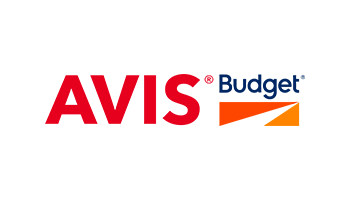#TFADubaiRush
Nutrition
NUTRITION & THE IMPORTANCE OF BREAKFAST FOR HIGH SCHOOL ATHLETES
The rapid growth that occurs during the high school years makes proper nutrition essential for high school athletes. Inadequate nutrition may lead to negative effects on their growth and development. High school athletes need a substantial number of calories for optimal growth and development and also because participation in sports places additional stress on the respiratory, cardiovascular, muscular and skeletal systems. Inadequate calorie consumption and low-quality nutrition dramatically reduces athletic performance.
Fats
Approximately 30 percent of total calories in a high school athlete’s diet should come from fat. Fats tend to get a bad reputation and are feared by many athletes, especially young, female athletes. Many think that by eating fat, they will get fat. This is not the case! High school athletes need healthy fats, which can be found in foods such as salmon, tuna, avocados, walnuts, olive oil and canola oil. They should limit the fat that comes from fast foods and most processed foods. Omega-3 fats, which are particularly healthful, have been shown to have anti-inflammatory effects. Such fats are found in cold-water fish such as tuna, salmon and mackerel.
Carbohydrates
Carbohydrates and fat are the main fuel sources the body uses for energy. It’s recommended that 55 percent of a high school athlete’s diet comes from carbohydrates primarily in the form of complex carbohydrates. Complex carbohydrates include starches and fiber and are the most nutrient-dense carbohydrate.
Encourage your high school athletes to fill up on whole grains, whole wheat pasta, brown rice and fresh fruits and vegetables. Cookies and other processed foods should be kept to a minimum as should sugary drinks such as soda.
These articles are strictly for informational purposes. Always seek medical and/or nutritional advice before taking any action.
All nutrition articles posted on the TFA website have been reviewed and verified by our in-house Registered Dietitian/Licensed Nutritionist. Leah Fakhuri, R.D., L.D.N. This Article was sourced from http://healthyeating.sfgate.com
Protein
The word “protein” comes from the Greek word meaning “of prime importance.” Protein is essential for optimal health, growth and development. Inadequate protein intake will impair development and athletic performance.
Approximately 15 percent of a high school athlete’s total calorie intake should come from lean protein sources. Food such as milk protein, soy, chicken, turkey, fish and egg whites are all wonderful choices.
For high school athletes that do not eat animal products, food such as quinoa, soy, beans, nuts and legumes will help them meet protein needs. Plant proteins are considered incomplete proteins meaning they do not contain all the essential amino acids. Therefore, athletes should eat a variety of these foods to get all the required amino acids.
Divide Your Daily Calories Into Several Different Meals
Importance of Breakfast
One in four teenagers skip breakfast. This is a serious issue for teenage athletes as they are still developing physically and require adequate vitamin, mineral and calorie intake for optimal health and growth.
Skipping breakfast, or any meal as an athlete, can have a dramatic effect on athletic performance. High school athletes should be encouraged to think of food as fuel for their bodies. Fueling their body well at the beginning of the day will ensure they have enough energy to meet the demands of practice sessions and it will also allow them to choose better quality foods for other meals.
As Registered Dietitian Nancy Clark states, “Without a doubt, breakfast is the meal that makes champions.”
These articles are strictly for informational purposes. Always seek medical and/or nutritional advice before taking any action.
All nutrition articles posted on the TFA website have been reviewed and verified by our in-house Registered Dietitian/Licensed Nutritionist. Leah Fakhuri, R.D., L.D.N. This Article was sourced from http://healthyeating.sfgate.com
NUTRITION FOR ATHLETES: CARBOHYDRATES AND PROTEINS
It is an important goal for all athletes to provide their bodies with appropriate fuels to maintain and enhance their performance. Carbohydrates and proteins are a major source for the athlete.
Most athletes need to consider the amount of time between eating and performance when choosing foods. The following are recommendations and facts to consider when consuming carbohydrates before, during and after training or competition.
Definitions
Athletes: for this purpose an athlete is defined as one who participates in sport activity with emphasis on cardio-respiratory endurance training (highly aerobic).
Exercise: Endurance, strength, and flexibility activities are all components of exercise that keep a person fit and healthy.
Fatique: The body’s energy reserves are exhausted and waste products, such as lactic acid, have increased. the athlete will not be able to continue activity at the same intensity or rate.
Glycogen: A stored form of glucose in the liver and muscle.
CONSUMING CARBOHYDRATES BEFORE EXERCISE
3-4 Hours Before Competition
(~ 700 kcal or 150 grams of carbs)
2 servings of fruits and vegetables, 2 servings of grain products, 1 serving of a lower fat milk product and 1 serving of a lean meat product.
Examples: fresh fruit, fruit or vegetable juice and baked potato, cereal with low-fat milk, low-fat yogurt, bread or bagel with peanut butter or lean meat or low-fat cheese, or spaghetti with tomato sauce.
2-3 Hours Before Competition
(~300-400 kcal or 90 grams of carbs)
1 serving fruit and vegetables and 2 servings of grain product.
Examples: fresh fruit, fruit or vegetable juice and bread, bagel, English muffin (with limited amounts of margarine, butter, or cream cheese), oatmeal, or pancakes (with limited amount of syrup).
1 Hour or Less Before Competition
(~100 kcal or 30 grams of carbs)
1 serving of fresh fruit or juice or 1 ½ cup of a sports drink
Protein plays a minor role in providing energy for the body during exercise.
THE PRE-EXERCISE MEAL
The Pre-exercise meal provides two main purposes:
It keeps the athlete from feeling hungry before and during exercise
It maintains optimal levels of blood glucose for the exercising muscles
The pre-excercise meal should be eaten early enough to allow time for digestion and absorption and complete emptying of the stomach.
CONSUMING CARBOHYDRATES DURING EXERCISE
Carbohydrate intake during exercise improves performance when the exercise lasts longer than one hour. If exercise is less than one hour, ingesting carbohydrates appears to have no benefits in most individuals.
If carbohydrate feeding starts during exercise, it should be continued throughout the exercise. Discontinuing part-way through can result in fatigue* or decreased performance. More carbohydrates is not better. Nausea, abdominal cramps, and diarrhea may occur if large amounts of carbohydrate are consumed.
Here are some ideas…
Fluids: The rate of ingestion should be about ½ – 1 cup every 15 to 20 min (26 – 30 g every 30 min), such as sport drink, diluted juice, defizzed regular pop, sweetened herbal tea.
or Gels: the rate of ingestion should be 30 – 40 g every 30 minutes. (one gel pack every 30 minutes)
or Solids: about 30 – 40 g (such as ¼ bagel) every 30 minutes and drink plain water
Carbohydrate feeding does not prevent fatigue, it simply delays it.
CONSUMING CARBOHYDRATES AFTER EXERCISE
Appetite is usually suppressed after exercise. Fluid, such as a yogurt smoothie or a sports drink, is an option for those who cannot consume solid carbohydrates.
Homemade Sports Drink: 3 1/2 cups water, 1/2 cup orange juice, 2 1/2 tablespoons honey or other sugar, 1/4 teaspoon salt
- Energy is stored as glycogen* in muscles.
- It takes at least 20 hours to restore muscle glycogen after intense exercise.
- Restoration is enhanced by consuming carbohydrates in the first 15-30 minutes immediately after exercise.
- Delaying carbohydrate intake after exercise will reduce glycogen restoration.
- At least 60-90 g of carbohydrates should be consumed within 15 – 30 minutes after exercise to maximize muscle glycogen stores.
- Ideal foods include pasta, sandwiches, yogurt, crackers, bagels, granola bars, or, if preferred, a sports drink.
- The addition of a small amount of protein will further enhance glycogen restoration.
- Athletes should not consume any alcohol during the recovery period. Alcohol will delay the restoration of glycogen.
SO WHY EAT CARBOHYDRATES?
Carbohydrates are the body’s main source of energy for athletic events. Carbohydrate feedings before exercise can help to restore glycogen stores which may be called upon during prolonged training and in high-intensity competition.
Carbohydrate meals should be low fat, easily digested, and tolerated by the athlete. Fat intake should be limited because it delays stomach emptying time and takes longer to digest.
APPROXIMATE CARBOHYDRATE CONTENT FOOD CHART
| Food | Portion | Carbs |
|---|---|---|
| GRAIN EQUIVALENTS | ||
| Bagel | large (3-4 oz) | 45-60g |
| Bread, sliced | 1 slice | 15g |
| Crackers, rounds or squares | 6-8 crackers | 15-20g |
| Muffin or pancake | 2.5” & 4” diameter respectively | 15-20g |
| Oatmeal | 1/2 cup (1 packet of instant) | 15g |
| Pasta or rice | 1/2 cup cooked (1 oz dry) | 15-20g |
| Popcorn | 3 cups, popped | 15g |
| Tortilla, corn or flour | 5-6 inch | 15g |
| VEGETABLES | ||
| Broccoli | 1 cup cooked | 5-10g |
| Salad greens (lettuce, spinach, etc.) | 2 cups raw | 5-10g |
| Carrots, winter squash, pumpkin | 1 cup | 15g |
| Beans, peas, lentils | 1 cup | 30g |
| Sweet potato, corn, regular potato | 1 cup | 30-45g |
| Other vegetables (cucumber, green beans, mushrooms, onions, tomatoes) | 1 cup raw or cooked | 5-10g |
| FRUITS | ||
| Apple, banana | large | 30g |
| Fruit, dried | 1/3-1/2 cup | 60g |
| Fruit juice, lemonade | 1 cup | 30-45g |
| MILK AND YOGURT | ||
| Milk, plain yogurt | 1 cup | 12g |
| Yogurt, sweetened and flavored | 1 cup | 40-45g |
| FRUITS SPORT AND DISCRETIONARY FOODS | ||
| Fluid-replacement beverage | 1 cup | 15-19g |
| Soda | 12 oz | 40-45g |
| Sport bar | 1 bar | 40-60g |
| Sport bar, high protein | 1 bar | 2-30g |
| Sugar, jelly, jam, honey, preserves | 1 Tbsp | 15g |
QUICK FACTS ON PROTEIN
- Consuming protein with carbohydrates immediately after exercise will increase the restoration rate of muscle glycogen stores.
- Protein does not enhance the restoration rate of muscle glycogen stores when intakes of carbohydrate are insufficient.
- Most athletes’ regular diets provide ample protein. Even if there is an increased need for protein in a particular sport, the increases are easily met by their typical diet. Intakes of additional protein beyond the recommended levels for athletes’ does not increase strength or enhance performance.
- Protein plays a minor role in providing energy for the body during exercise.
PROTEIN SUPPLEMENTS: DISPELLING THE MYTHS
Protein supplements are not necessary if you are consuming a variety of food and including good sources of protein. If you want to build or maintain muscle for health, engaging in resistance activities that you enjoy and getting the nutrients you need from food is your best bet.
DID YOU GET ENOUGH PROTEIN?
Meat, poultry, fish, eggs, beans, milk, cheese, yogurt, nuts, seeds, and soy products are good sources of protein.
Curious about how many grams of protein you need each day? Most of us need about 0.8 grams for every kilogram of body weight. Let’s break that down:
Step 1: Weight in pounds ÷ 2.2 = weight in kilograms
Step 2: Weight in kilograms x 0.8 = Average Daily Protein Need
For example, a man who weighs 170 lbs (77 kg) would need 62 grams protein/day. A 140 lb (64 kg) woman needs 51 grams/day.
SO, ARE PROTEIN SUPPLEMENTS NECESSARY?
Are you taking protein supplements? Maybe you’ve heard that they will bulk you up or help keep you healthy. First of all, taking protein supplements will not build muscle. It’s the resistance activities (exercise) that will maintain or develop muscles.
Protein supplements do provide protein and calories. If you get enough protein and calories from food, you already have the building blocks necessary to maintain and grow muscles. Most of us, even vegetarians and athletes, get enough protein from food. Moreover, food provides other nutrients that you often won’t find in protein supplements. For example, milk has calcium, vitamin D, and riboflavin; nuts contain fibre, iron and vitamin E.
ARE PROTEIN SUPPLEMENTS SAFE?
So, you’ve decide that you still really want the protein supplement. Research shows that protein supplements are generally not harmful to our health when taking the recommended amount. However, taking large amounts (more than is recommended on the product) for an extended period of time can cause strain on your kidneys, especially if you consume a large amount of protein from food and/or already have existing kidney problems.
Pregnancy and breast-feeding: there is not enough reliable information about the safety of taking whey protein if you are pregnant or breast-feeding. Stay on the safe side and avoid use.
Weight gain: a “supplement” is just what it sounds like – a source of calories in addition to your regular diet. Regardless of how nutritious your supplement is it has the potential to contribute to weight gain if you do not monitor your total calorie intake. To prevent gaining weight, monitor your eating habits. You will need to cut back on something if you are adding a protein supplement. A high-protein product can even make you gain fat since muscle is built from strength training, not high protein food.
THINGS TO CONSIDER
Cost of Supplements versus Food
The price of protein supplements can vary quite a bit making it hard to say whether it’s more or less cost effective to get protein from supplements versus food. Depending on the food and supplement you are comparing, the cost of one gram of protein from supplements could be more, the same, or less than from food.
Keep the Diet Balanced
The science around eating a balanced diet has been done for you in Healthy Eating with Canada’s Food Guide. One risk of using protein supplements is eating a diet that is too high in one food group and disregarding the importance of nutrients from the others. Make sure to continue to eat plenty of vegetables and fruit.
Keep up the fiber
Although some protein supplements are fortified with dietary fibre, others are not. Lack of dietary fibre can cause issues like constipation, diverticulitis, and related problems. Promote good digestive health by choosing supplements that contain significant amounts of fibre, eat probiotic bacteria, such as yogurt, and keep whole grains, veggies, and fruit a major part of your diet.
FUEL WITH REAL FOOD
Chicken is a lean source of all necessary amino acids and can be prepared in many ways. A six-ounce chicken breast provides 54 grams of protein. Chicken breasts and thighs have similar protein contents but different flavors due to differences in their fat contents.
Soy protein is a plant-based protein that contains all the essential amino acids. Some studies have found soy protein to be equally as effective in building muscle as whey protein. Common sources of soy protein include tofu, edamame beans, and soy-protein supplements.
Quinoa is an ancient grain famous for its protein content. Unlike most grains, quinoa contains all nine essential amino acids — the amino acids that your body cannot make. They are also key for muscle building. Quinoa still contains only eight grams of protein per cup, so it should not be considered a meal’s primary protein source.
Salmon contains slightly less protein per serving than chicken, turkey, or beef, but it is a great source of long-chain omega-3 fats. The protein and fat combination found in salmon makes it ideal for pairing with fibrous vegetables, such as broccoli or asparagus, for a simple, high-protein, carb-controlled meal.
Have a protein and carbohydrate snack 30 minutes after intense workout. This is a great way to replenish your glycogen stores and helps provide the nutrients your body needs. Most protein supplements contain about 10-12 grams per ½ scoop.
Tasty snack ideas that provide about the same amount of protein as one scoop or 10 – 12 grams (plus other nutrients and flavors!):
Have a protein and carbohydrate snack 30 minutes after intense workout. This is a great way to replenish your glycogen stores and helps provide the nutrients your body needs.
- Small handful of almonds and piece of fruit
- ¾ cup Greek yogurt and 2 tablespoons granola
- ¾ cup regular yogurt, 1 tablespoons chia seeds, and ½ cup blackberries
- 2 rice cakes with 2 tablespoons nut butter
- 1 hard boiled egg and 2 thin slices of cheese on piece of whole grain toast
- ½ cup sliced pineapple with ¼ cup cottage cheese
- ¼ can of tuna, lemon juice and a bit of mayo on 4 plain whole grain crackers
- 1 cup Shredded Wheat (can add 1 teaspoon sugar for flavor) with ¾ cup cows/soy milk (rice, oat, hemp, coconut and almond milk are low in protein)
- 40 grams roasted chicken (the size of half a deck of cards) in a small whole grain tortilla wrap with lettuce and mustard
- 1 package plain instant oats and 1 tablespoon hemp seed (can add 1 tsp sugar for flavor)
DISPUTING THE CLAIMS
| Product | Claim | Evidence |
|---|---|---|
| Caffeine | Burns fat Protects carbohydrate stores Energizes | Does not burn fat Does not protect carbohydrate stores Increases mental alertness |
| Carnitine | Burns fat | Does not burn fat |
| Creatine | Increases lean body mass Increases strength | Increases total body and lean mass Increases strength, but is not useful in endurance exercise |
Look for a natural health product number (NPN) or a drug identification number (DIN) on products. These numbers certify that the product has been approved in Canada. Beware: being “natural” or approved for sale does not guarantee it is risk-free!







